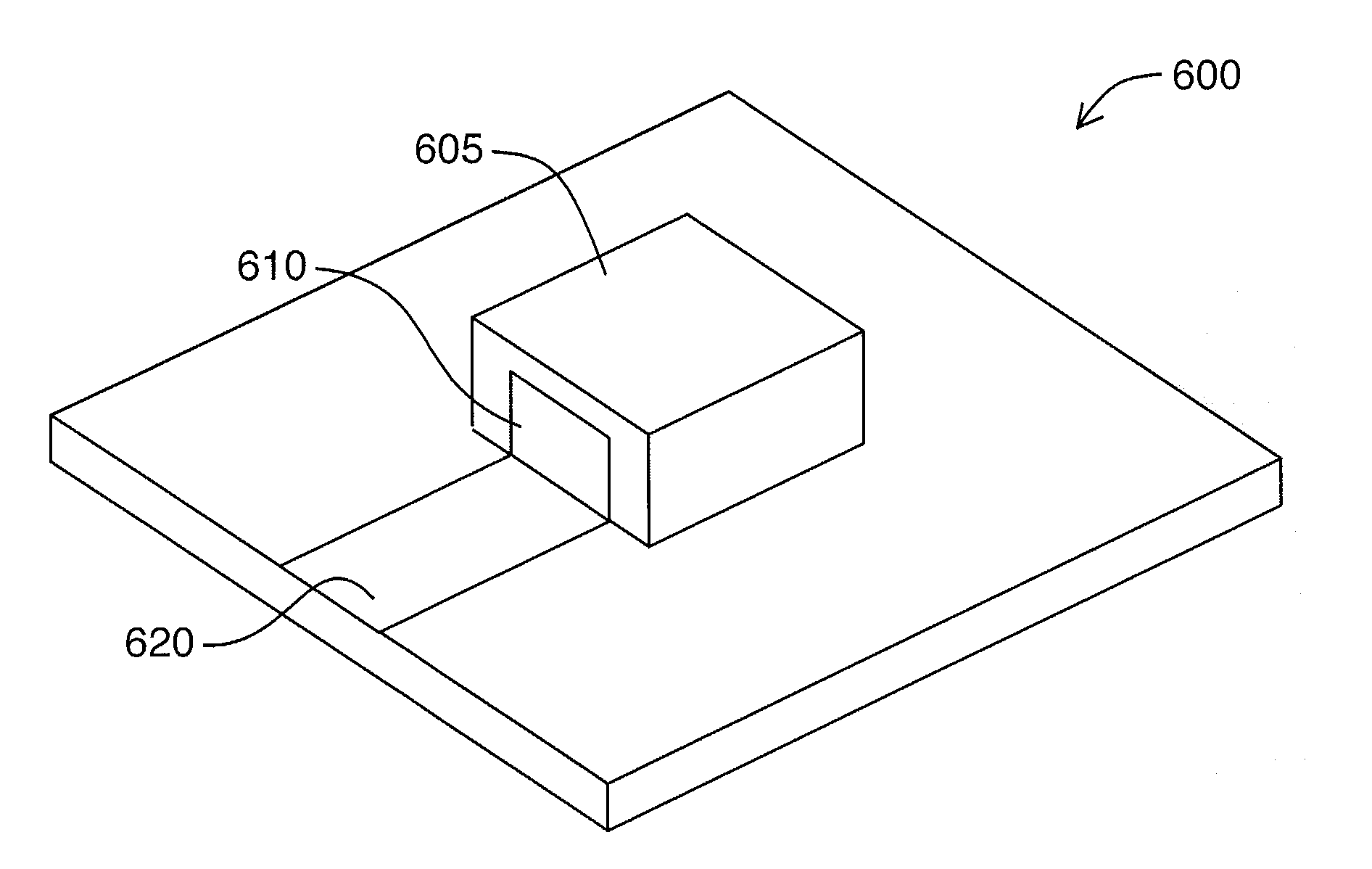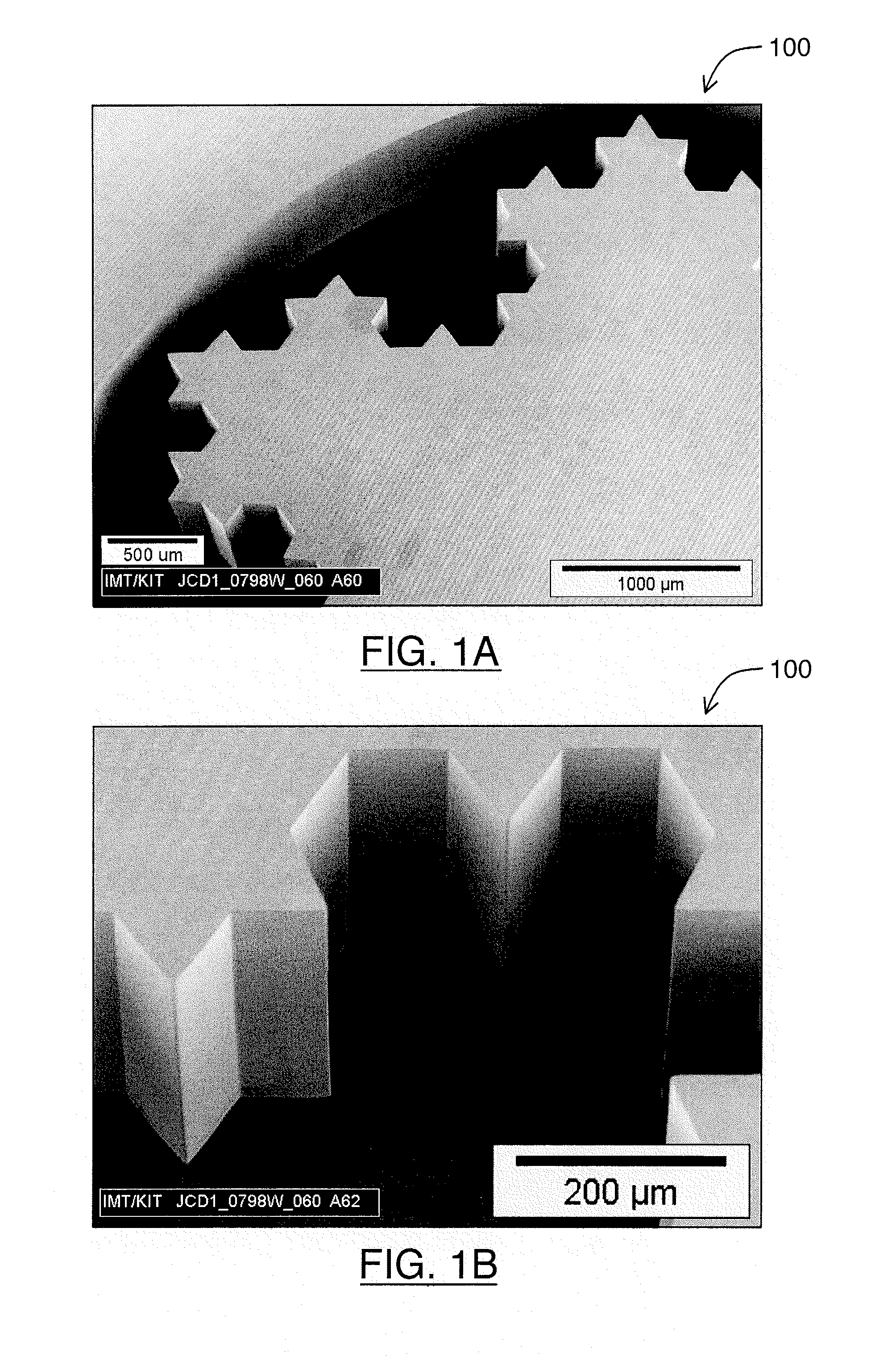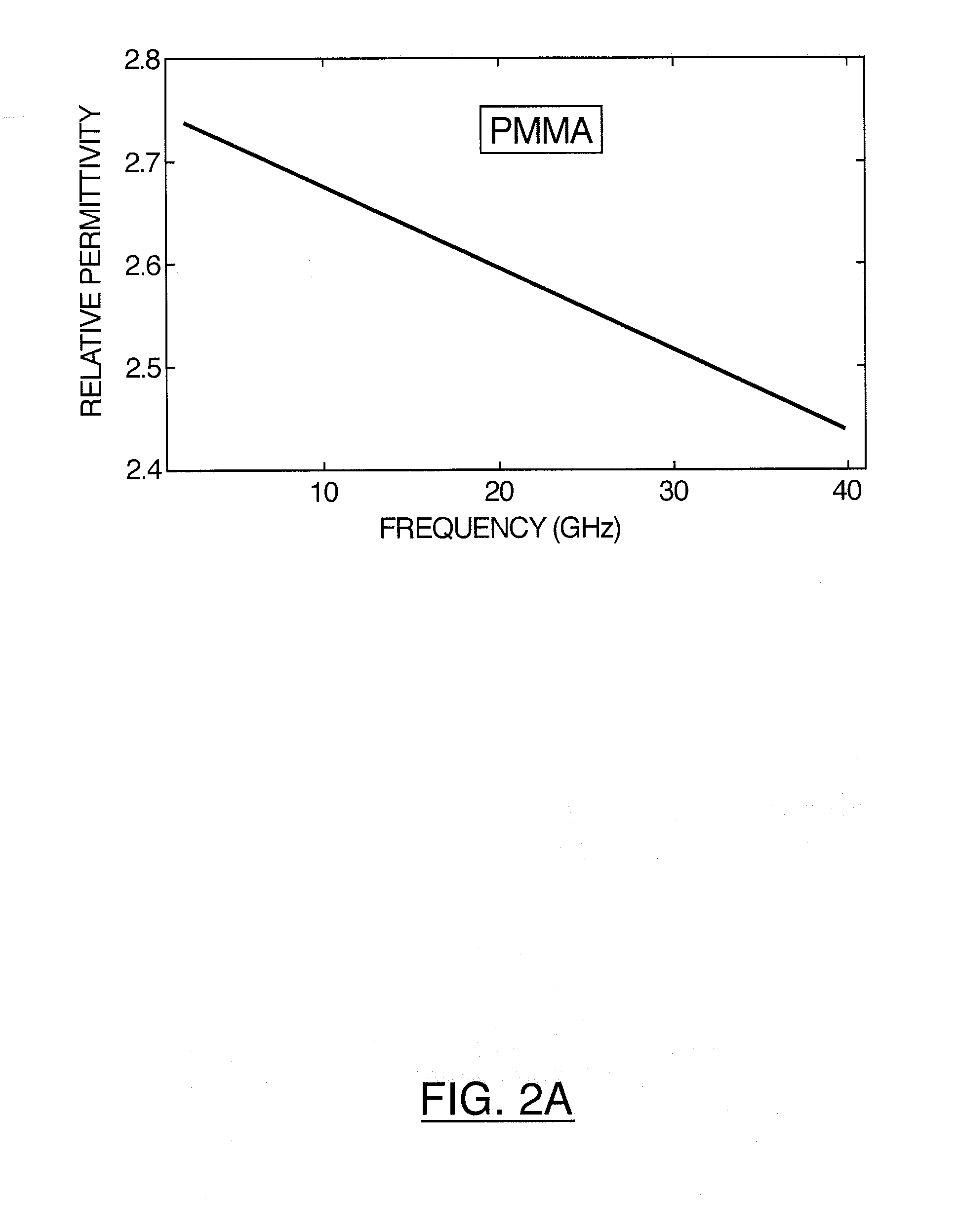Polymer-based resonator antennas
a resonator body and polymer technology, applied in the field of radio frequency (rf) antennas, can solve the problems of limiting the wider use of dras, dras have been mostly limited to simple structures, and the fabrication process of ceramic-based dras is more complex and costly, so as to improve the effect of the relative permittivity of the polymer-based resonator body
- Summary
- Abstract
- Description
- Claims
- Application Information
AI Technical Summary
Benefits of technology
Problems solved by technology
Method used
Image
Examples
Embodiment Construction
[0100]The use of polymer-based materials to fabricate DRAs may facilitate greater use of this class of antennas in commercial applications. The natural softness of polymers can dramatically simplify fabrication and their low relative permittivity can further enhance the impedance bandwidth of DRAs.
[0101]Described herein are compact radio frequency (RF) antennas and devices using non-traditional polymer-based materials, and methods for fabricating the same. The described compact RF antennas enable improved performance and increased functionality for various emerging wireless communication and sensor devices (e.g., miniature radios / transmitters, personal / wearable / embedded wireless devices, etc.), automotive radar systems, small satellites, RFID, sensors and sensor array networks, and bio-compatible wireless devices and biosensors). In particular, these polymer-based antenna devices may be referred to as polymer or polymer-based resonator antennas (PRAs).
[0102]Currently, one of the big...
PUM
| Property | Measurement | Unit |
|---|---|---|
| relative permittivity | aaaaa | aaaaa |
| temperatures | aaaaa | aaaaa |
| temperatures | aaaaa | aaaaa |
Abstract
Description
Claims
Application Information
 Login to View More
Login to View More - R&D
- Intellectual Property
- Life Sciences
- Materials
- Tech Scout
- Unparalleled Data Quality
- Higher Quality Content
- 60% Fewer Hallucinations
Browse by: Latest US Patents, China's latest patents, Technical Efficacy Thesaurus, Application Domain, Technology Topic, Popular Technical Reports.
© 2025 PatSnap. All rights reserved.Legal|Privacy policy|Modern Slavery Act Transparency Statement|Sitemap|About US| Contact US: help@patsnap.com



